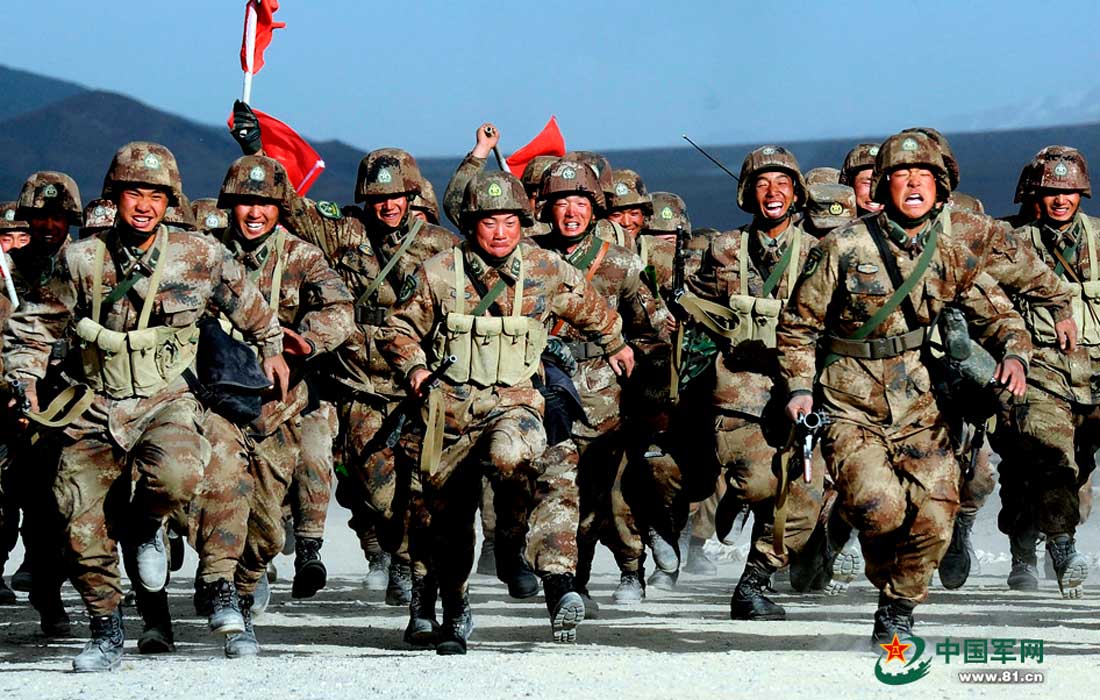At the peak of winters, Indian and Chinese troops are locked in a standoff in the harsh terrains of the Himalayas. And to train its new recruits, the Chinese PLA prescribes a set of physical exercises in the high altitudes.
Israel Delivers Second Batch Of Iron Dome Missile Defense Systems To The United States
Noting the freezing temperatures along the Line of Actual Control (LAC), the new recruits of the People’s Liberation Army (PLA) go through a series of altitude adaptive exercises to acclimatize their body.
The veterans are already aware of the hardships, however, the new recruits “not only need to face the plateau environment of thin air, cold weather, rain, and snow, but also need to adapt to the new environment, new training, and new tasks after they get down there,” says China Military, the official website of PLA.

It further says that new comrades often catch a cold and fever because their respiratory systems and fitness levels have not yet fully adapted to the plateau environment and climate, low air pressure, and oxygen scarcity.
Reportedly, the Chinese frontier patrol troops have been supplied with winter gear including cold-proof hoods, warm training clothes, lightweight cold-proof warm training coats, moisture-absorbing, and quick-drying underwear, warm fleece underwear, down warm cotton underwear, warm cotton vests, and cold-proof outer gloves, among others.
According to the Chinese state media, new technology has been applied in making these clothes. “The warm training suit uses the latest domestically developed high-strength polyamide fiber to achieve both lightweight and high strength,” reported Global Times citing the Chinese PLA Daily.
Acknowledging the need for a positive attitude, it also says that only scientific training will accelerate the adaptation of the body to the high altitude region. More attention should be given to rest than exercise. “After a week or two, the body slowly begins to adapt. At this time, some adaptive physical training can be carried out with a controlled intensity.
The preliminary military training is divided into three stages, each of which lasts about one month. First is “adapt to the plateau” to prevent altitude sickness in a snowy region. The PLA recruits would practice certain exercises to improve the cardiopulmonary function and the body’s immune function.
The second is “fit for the plateau” military sports training. It prescribes certain common exercises including jogging with ‘slope running’ as a supplement. These would help improve leg strength and gradually increase lung capacity.
It also suggests short-distance fast sprint runs “which can be a 50-meter or 80-meter track, not necessarily a full-speed sprint, and probably use 70%-80% of the full speed,” followed by strength training. “Arranging some strength training after gradually adapting to the plateau will help lay a good physical foundation. Push-ups, sit-ups, squats with weights, bell lifts, snatches, and running with weights are all good choices,” says the website.
The third is the military physical training “applicable to plateau”. After relevant training, the new recruits are deployed to their positions for operations. Challenging physical training methods like high altitude leapfrog, high-altitude combination relay race followed by strength training. “Carry out log-lifting and log-lifting exercises outdoors, and perform weight-bearing squats, horizontal bench presses, and prone leg rolling exercises in the gym. The size of the weight depends on the actual ability of the individual,” it says.
Long-distance load-bearing training is conducted with a 30 kg rucksack and walking on paths and a ridge that are not lower than 2000 meters above sea level for a whole day or even two days.
Follow EurAsian Times on Google News